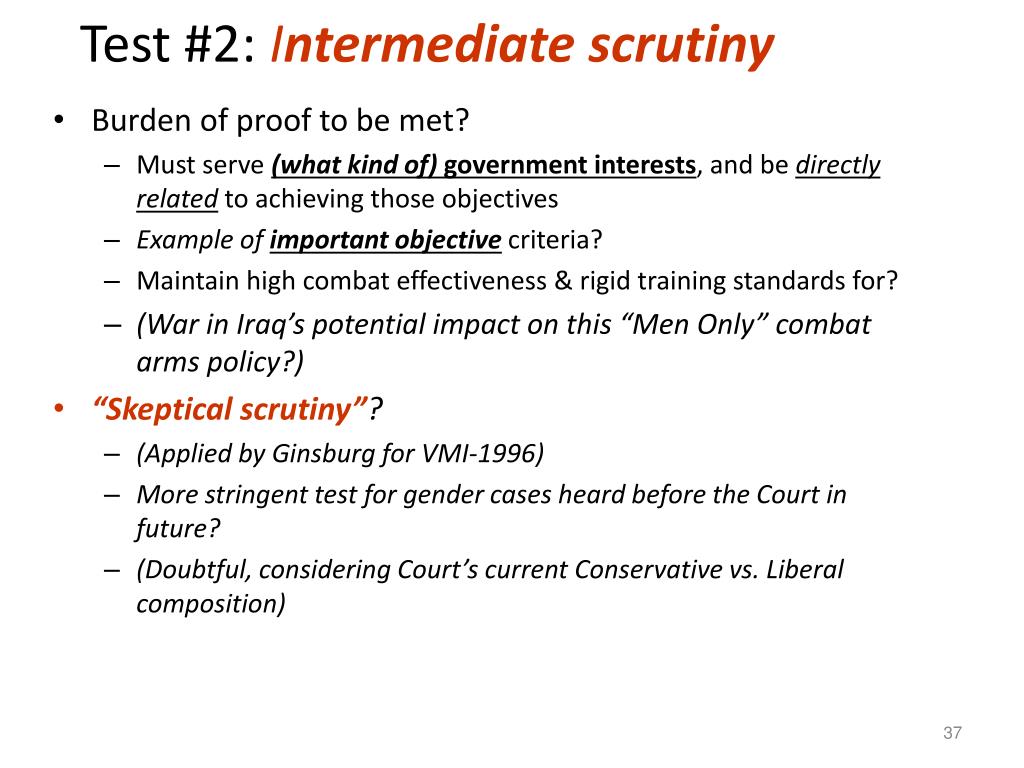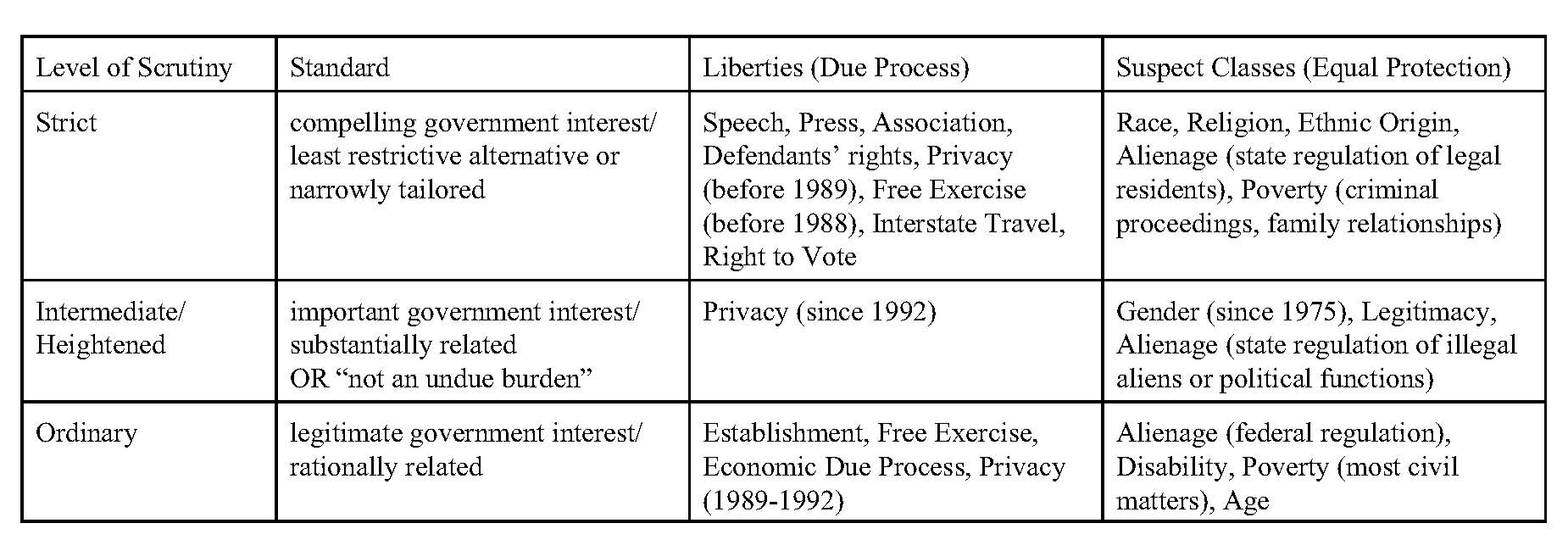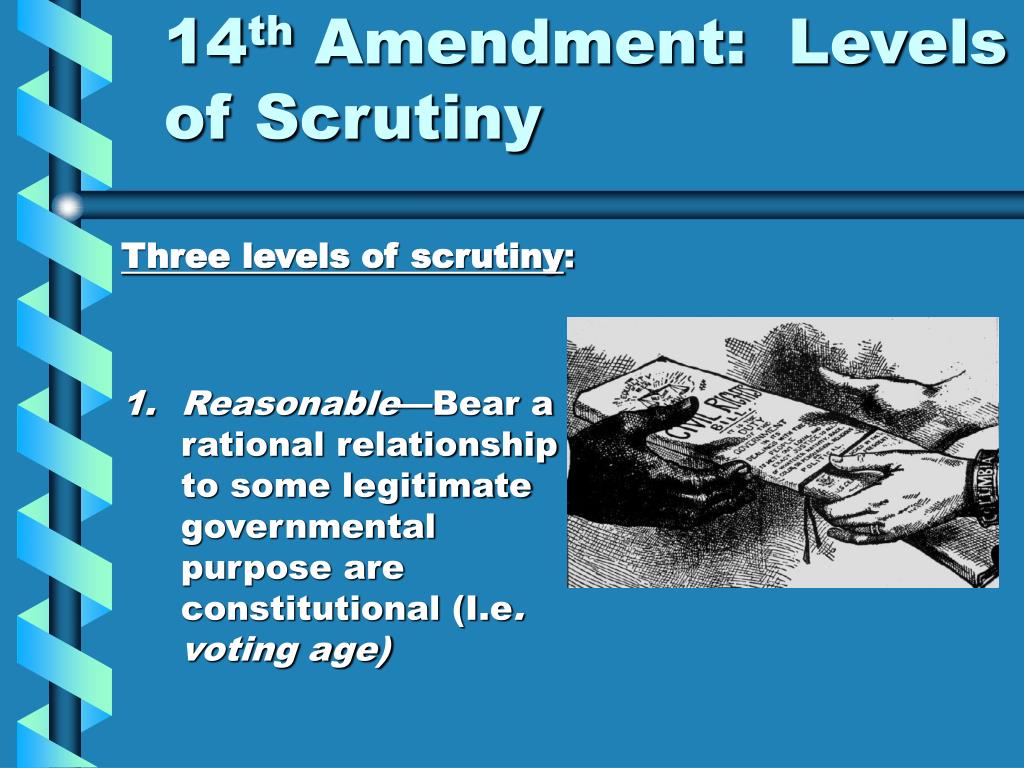
The compelling state interest test is distinguishable from the rational basis test, which involves claims that do not involve a suspect class or fundamental right, but still arise under the Equal Protection Clause or Due Process Clause.

in his dissent (part III) in Hellerstedt). Supreme Court Justice, Clarence Thomas (e.g. has written that rather than being neatly applied, under strict scrutiny, "interpretation is more varied than is often recognized", a view that has been acknowledged by U.S. See also the cases cited below, however several appear to permit the exemption from laws based upon religious liberty. However, a discrepancy was found in the type of religious liberty claim, with most claims for exemption from law failing and no allegedly discriminatory laws surviving.

In one area of law, religious liberty, laws that burden religious liberty survived strict scrutiny review in nearly 60% of cases. However, an empirical study of strict scrutiny decisions in the federal courts found that laws survive strict scrutiny more than 30% of the time. Legal scholars, including judges and professors, often say that strict scrutiny is "strict in theory, fatal in fact" since popular perception is that most laws subjected to the standard are struck down. Some legal scholars consider this "least restrictive means" requirement part of being narrowly tailored, but the Court generally evaluates it separately. The test will be met even if there is another method that is equally the least restrictive.
Tiers of scrutiny how to#
While the Courts have never brightly defined how to determine if an interest is compelling, the concept generally refers to something necessary or crucial, as opposed to something merely preferred.
Tiers of scrutiny series#
(1938), one of a series of decisions testing the constitutionality of New Deal legislation. Supreme Court decision in United States v. The notion of "levels of judicial scrutiny", including strict scrutiny, was introduced in Footnote 4 of the U.S. These standards are applied to statutes and government action at all levels of government within the United States. The lesser standards are rational basis review and exacting or intermediate scrutiny. The standard is the highest and most stringent standard of judicial review and is part of the levels of judicial scrutiny that courts use to determine whether a constitutional right or principle should give way to the government's interest against observance of the principle.

Failure to meet this standard will result in striking the law as unconstitutional. The government must also demonstrate that the law is "narrowly tailored" to achieve that compelling purpose, and that it uses the "least restrictive means" to achieve that purpose.

Strict scrutiny holds the challenged law as presumptively invalid unless the government can demonstrate that the law or regulation is necessary to achieve a " compelling state interest". constitutional law, when a law infringes upon a fundamental constitutional right, the court may apply the strict scrutiny standard. This article is about the principle in United States constitutional law.


 0 kommentar(er)
0 kommentar(er)
